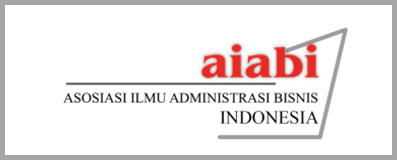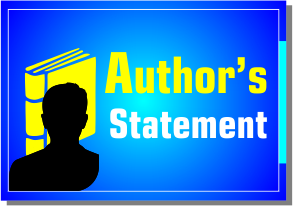Evaluasi Keakuratan Model Beneish M-Score Sebagai Alat Deteksi Kecurangan Laporan Keuangan (Kasus Perusahaan pada Otoritas Jasa Keuangan di Indonesia)
DOI:
https://doi.org/10.31334/bijak.v16i2.508Keywords:
Fraud, Beneish M-Score, Logits, AQI, TATAAbstract
This research has been conducted aiming to see in more detail whether the fraud detection model that has been used so far, the Beneish M-Score, is capable of being one of the tools to see financial report fraud occurring in the business world. This is interesting to study considering that many companies in the Financial Services Authority (OJK) in Indonesia receive warnings and even fines for the delay in submitting financial reports to Capital Market Authority.
To carry out the analysis process as in the objectives in the first paragraph, the research team took a sample of 23 companies on the Indonesia Stock Exchange, where the companies were in the list of OJK. The 23 companies that were sanctioned by the OJK compared to 23 not sanctioned companies. In sample of companies that were sanctioned by the OJK, the number of non-manipulator companies according to the Beneish M-Score calculation was 62% and for companies included in the manipulator classification only 38%. Whereas in the sample of companies not subject to sanctions from the OJK, the number of companies included in the non-manipulator category is actually smaller, 52%, calculated using M-Score. This is the main basis for further research.
In this study, the analysis process is carried out by quantitative explanatory analysis using probit regression models (probit models), on financial statement data which are categorized into two, the financial ratio with original data from OJK (audited) and the financial ratio with data modification (advanced business analysis). The results show that Beneish M-Score Model could not be implemented effectively to detect the fraud in the companies under control by OJK because only 2 (two) variables influence the existence of fraudulent, are Asset Quality Index (AQI) and Total Accrual To Total Assets (TATA). Thus, it is appropriate and important for the Beneish M-Score modeling to be equipped with other models that are more able to explain.References
Abdullahi, R., & Mansor, N. (2015, October). Fraud Triangle Theory and Fraud Diamond Theory: Understanding the Convergent and Divergent for Future Research. International Journal of Academic Research in Accounting, Finance and Management Sciences, 5(4), 38-45. doi:10.6007/IJARAFMS/v5-3/1823
ACFE. (2017). Report to the Nations on Occupational Fraud and Abuse: 2016 Global Fraud Study. Austin-Texas: Association of Certified Fraud Examiner Global.
ACFE. (2017). Survey Fraud Indonesia. Jakarta: ACFE Indonesia Chapter.
ACFE. (2018). Fraud Resources. ( © 2018 Association of Certified Fraud Examiners, Inc. All rights reserved) Retrieved Mei 31, 2018, from Report to the Nation: http://www.acfe.com/fraud-101.aspx
Amoa-Gyarteng, K. (2014). Analyzing a Listed Firm in Ghana for Early Warning Signs of Bankruptcy and Financial Statement Fraud: An Empirical Investigation of AngloGold Ashanti. European Journal of Business and Management, 6(5).
Aprilia, A. (2017). Analisis Pengaruh Fraud Pentagon Terhadap Kecurangan Laporan Keuangan Menggunakan Beneish Model Pada Perusahaan Yang Menerapkan Asean Corporate Governance Scorecard. Jurnal Akuntansi Riset, 9(1), 101 -132.
Aprilia, Cecilia, O., & Sergius, R. P. (2015). The Effectiveness of Fraud Triangle on Detecting Fraudulent Financial Statement: Using Beneish Model and the Case of Special Companies. Jurnal Riset Akuntansi dan Keuangan, 3(3), 786 - 800.
Aris, N. A., Othman, R., Arif, S. M., Malek, M. A., & Omar, N. (2013). Fraud Detection: Benford's Law vs Beneish Model. IEEE Symposium on Humanities, Science and Engineering Research. Retrieved from https://www.researchgate.net/publication/259783068
Beneish, M. D. (1999, September). The Detection of Earning Manipulation. Financial Analysts Journal, 55(5), 24-36. doi:DOI: 10.2469/faj.v55.n5.2296
Bhavani, G., & Amponsah, C. T. (2017). M-Score and Z-Score for Detection of Accounting Fraud. Accountancy Business and the Public Interest 2017. doi:https://www.researchgate.net/publication/318489930
Dalniala, H., Kamaluddina, A., & Sanusia, Z. M. (2015). Accountability in Financial Reporting: Detecting Fraudulent Firms. Procedia - Social and Behavioral Sciences(145), 61 - 69.
Darmawan, A. Z. (2016). Analisis Beneish Ratio Index untuk Mendeteksi Kecurangan Laporan Keuangan Perusahaan Manufaktur yang Listing di Bursa Efek Indonesia Tahun 2013-2014. Retrieved from https://eprints.uny.ac.id/33429/
Godfrey, J., Hodgson, A., Tarca, A., Hamilton, J., & Holmes, S. (2010). Accounting Theory (7th ed.). John Wiley & Sons, Inc.
Hall, J. A. (2016). Accounting Information Systems (9 th ed.). New York: Cangage Learning.
Hantono. (2018). Deteksi Financial Statement Fraud Melalui Model Beneish pada Perusahaan BUMN. Jurnal Manajemen Bisnis dan Inovasi, 5(3), 135 - 150.
Hariri, Wijayanti, A., & Srilucky. (2017). Predicting Financial Statements Corporate Fraud: Beneish M-Score Model. Jurnal Ilmiah Bidang Akuntansi dan Management, 14(2). doi:http://dx.doi.org/10.31106/jema.v14i02.506
Iqbal, M., & Murtanto. (2016). Analisa Pengaruh Faktor Faktor Fraud Triangle terhadap Kecurangan Laporan Keuangan pada Perusahaan Properti dan Real Estate. Seminar Nasional Cendekiawan.
Kartikasari, R. N., & Irianto, G. (2010, Agustus). Penerapan Model Beneish (1999) dan Model Altman (2000) dalam Pendeteksian Kecurangan Laporan Keuangan. Jurnal Akuntansi Multiparadigma, 1(2), 323 - 340. doi:http://dx.doi.org/10.18202/jamal.2010.08.7096
Kassem, R., & Higson, A. (2012). The New Fraud Triangle Model. Journal of Emerging Trends in Economics and Management Science, 3(3), 191 - 195.
Koroy, T. R. (2008, Mei). Pendeteksian Kecurangan (Fraud) Laporan Keuangan oleh Auditor Eksternal. Jurnal Akuntansi dan Keuangan, 10(1), 22=33.
Mahama, M. (2015, January). Detecting Corporate Fraud and Financial Distress Using the Altman and Beneish Model: The Case of Enron Corp. International Journal of Economics, Commerce and Management, III(1). Retrieved from http://ijecm.co.uk/
Mehta, A., & Bhavani, G. (2017). Application of Forensic Tools to Detect Fraud - The Case of Toshiba.
Omar, N., Koya, R. K., Sanusi, M. Z., & Shafie, A. N. (2014, April). Financial Statement Fraud: A Case Examination Using Beneish Model and Ratio Analysis. International Journal of Trade, Economics and Finance, 5(2). Retrieved from https://www.researchgate.net/publication/271294108
Palepu, K., Healy, P., & Bernard, V. (2003). Business Analysis and Valuation: Using Financial Statements, Text & Cases. (3rd, Ed.) Thomson/South-Western Publisher.
Prehantika, F. K. (2016). Deteksi Financial Fraud dengan Model Beneish M-Score. Jurnal Akuntansi UNESA, 5(1).
Reskino, & Anshori, M. F. (2016, Agustus). Model Pendeteksian Kecurangan Laporan Keuangan dengan Analisis Fraud Triangle. Jurnal Akuntansi Multiparadigma, 7(2), 256 - 269. doi:http://dx.doi.org/10.18202/jamal.2016.08.7020
Skousen, C. J., Smith, K. R., & Wright, C. J. (2008). Detecting and Predicting FInancial Statement Fraud: The Effectiveness of the Fraud Triangle and SAS No. 99. http://ssrn.com/abstract=1295494. doi:https://dx.doi.org/10.2139/ssrn.1295494
Tarjo, & Herawati, N. (2015). Application of Beneish M-Score Models and Data Mining to Detect Financial Fraud. Procedia - Social and Behavioral Sciences, 211, 924 - 930.
Wahyuni, & Budiwitjaksono, G. (2017, Januari). Fraud Triangle sebagai Pendeteksi Kecurangan. Jurnal Akuntansi, XXI(01), 47 - 61.
Wolfe, D. T., & Hermanson, D. R. (2004). The Fraud Diamond: Considering the Four Elements of Fraud. The CPA Journal, 38 - 42.
Downloads
Published
Issue
Section
License

This work is licensed under a Creative Commons Attribution-ShareAlike 4.0 International License
Please find the rights and licenses in Majalah Ilmiah Bijak By submitting the article/manuscript of the article, the author(s) agree with this policy. No specific document sign-off is required.
- License
The commercial use of the article will be governed by the Creative Commons Attribution license as currently displayed on Creative Commons Attribution-ShareAlike 4.0 International License.
2. Author(s)' Warranties
The author warrants that the article is original, written by stated author(s), has not been published before, contains no unlawful statements, does not infringe the rights of others, is subject to copyright that is vested exclusively in the author and free of any third party rights, and that any necessary written permissions to quote from other sources have been obtained by the author(s).
3. User Rights
Majalah Ilmiah Bijak spirit is to disseminate articles published are as free as possible. Under the Creative Commons license, Majalah Ilmiah Bijak permits users to copy, distribute, display, and perform the work for non-commercial purposes only. Users will also need to attribute authors and Majalah Ilmiah Bijak on distributing works in the journal and other media of publications.
4. Co-Authorship
If the article was jointly prepared by more than one author, any authors submitting the manuscript warrants that he/she has been authorized by all co-authors to be agreed on this copyright and license notice (agreement) on their behalf, and agrees to inform his/her co-authors of the terms of this policy. Jurnal Bijak will not be held liable for anything that may arise due to the author(s) internal dispute. Majalah Ilmiah Bijak will only communicate with the corresponding author.
5. Miscellaneous
Majalah Ilmiah Bijak will publish the article (or have it published) in the journal if the article’s editorial process is successfully completed. Jurnal Bijak editors may modify the article to a style of punctuation, spelling, capitalization, referencing and usage that deems appropriate. The author acknowledges that the article may be published so that it will be publicly accessible and such access will be free of charge for the readers as mentioned in point 3.
Every accepted manuscript should be accompanied by "Copyright Transfer Agreement"prior to the article publication.





1.png)




